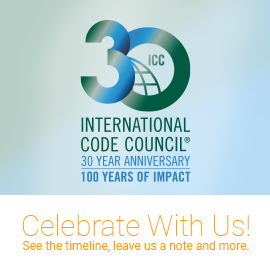
New building and energy codes ahead for Hawaii
![]() Currently, Hawaii is in the process of updating its state building and energy codes. The adoption of the State Building Code, based on the 2012 International Building and Residential Codes, will impact the design of new buildings with respect to increased structural and flood design requirements to increase the resiliency of structures to natural hazards due to seismic, wind, flooding and tsunami events.
Currently, Hawaii is in the process of updating its state building and energy codes. The adoption of the State Building Code, based on the 2012 International Building and Residential Codes, will impact the design of new buildings with respect to increased structural and flood design requirements to increase the resiliency of structures to natural hazards due to seismic, wind, flooding and tsunami events.
Kraig Stevenson, senior regional manager of government relations for the International Code Council, discusses the code updates in an article — New Codes Ahead — which appeared in the July 2020 issue of Building Industry Hawaii. Below is an excerpt from the article.
Hawaii’s building codes are updated every few years as new building standards evolve, said Kraig Stevenson, senior regional manager of government relations for the International Code Council, which oversees building codes worldwide.
Updated codes, Stevenson says, are crucial for structural integrity. Moreover, buildings destroyed or damaged in a hurricane or earthquake that are not up to code forfeit Federal Emergency Management Agency (FEMA) aid.
“FEMA has made their policy very clear regarding disaster relief funding for rebuilding buildings,” he said. “The jurisdiction has to have current building codes adopted and implemented.”
Currently, Hawaii is in the process of updating its state building and energy codes. The adoption of the State Building Code, based on the 2012 International Building and Residential Codes, will impact the design of new buildings with respect to increased structural and flood design requirements to increase the resiliency of structures to natural hazards due to seismic, wind, flooding and tsunami events. Additionally, these model building codes have increased the fire protection for the first responders for new construction.
The state of Hawaii and the city and county of Honolulu are also working on amendments to the 2018 International Building and Residential Codes, and the 2018 International Energy Conservation Code. All these codes automatically become part of the State Building Codes two years after their 2018 publication dates.
After that, the city and county of Honolulu and other Hawaii counties will be required to adopt these codes next calendar year (2021), three years after their publication date. In each case, if there is no action, these codes automatically become the building codes of both the state of Hawaii and the counties.
Hawaii’s new codes may confer other benefits besides structural integrity, said Stevenson. “The Bipartisan Budget Act of 2018 included the Federal Cost Share Reform Incentive provision, which incentivizes states to update their latest building codes and invest in the resiliency of their communities. This provision includes almost $90 billion in additional federal relief funding.”





